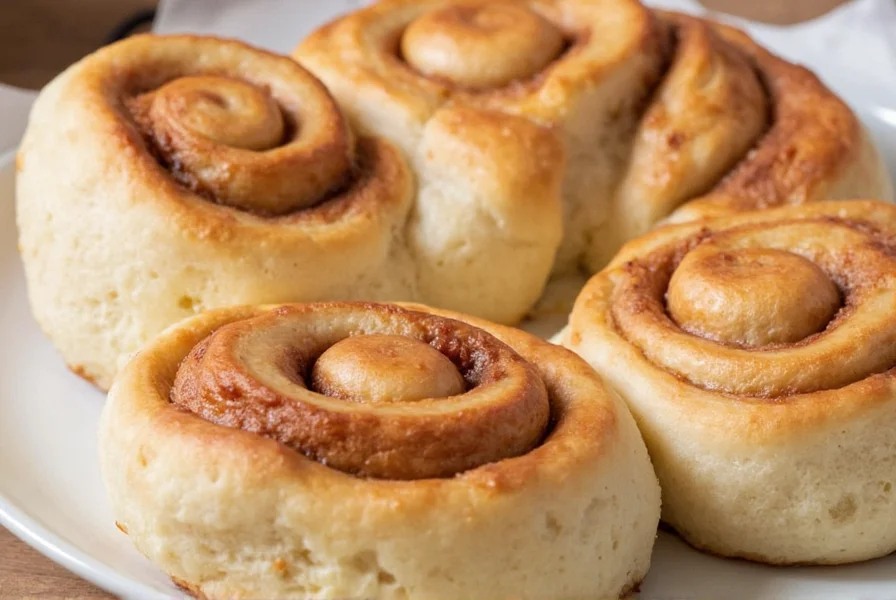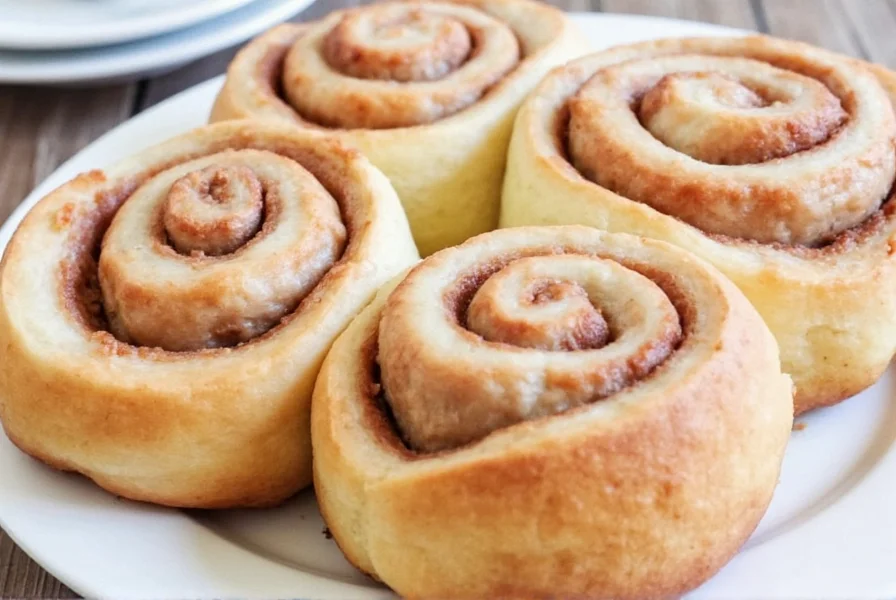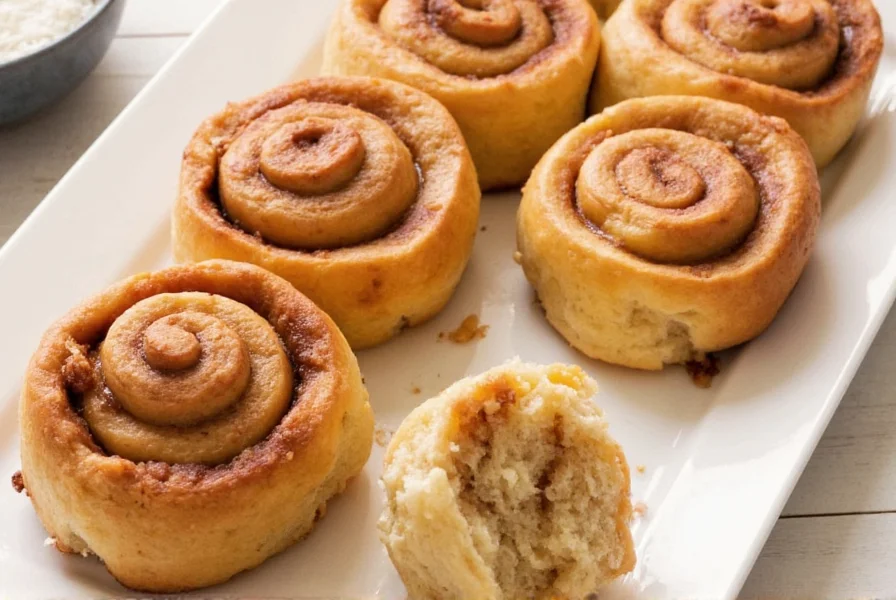If you've struggled with complicated cinnamon roll recipes before, this straightforward method solves your biggest pain points. Forget hours of rising time or expensive stand mixers - our approach uses active dry yeast for reliable results and incorporates a foolproof folding technique that creates beautiful swirl without messy filling leakage. You'll get bakery-quality cinnamon rolls using only bowls and a baking sheet you already own.
The Secret to Truly Easy Cinnamon Rolls
Most "easy" cinnamon roll recipes cut corners that compromise texture and flavor. Our method maintains the essential elements of great cinnamon rolls while eliminating unnecessary complexity. The key innovations include:
- A single-rise technique that cuts waiting time in half
- Precise butter temperature guidance to prevent dough tearing
- A balanced filling ratio that won't leak during baking
- Clear visual cues instead of strict timing for each step
Professional bakers know that cinnamon roll success depends on proper gluten development and controlled fermentation. Our recipe achieves this through a "no-knead" folding method that builds structure gently, making it perfect for beginners while delivering results that impress experienced bakers.
Simple Ingredients You Already Have
This recipe uses pantry staples with smart substitutions where needed. The table below shows exactly what you'll need:
| Ingredient | Amount | Key Purpose | Substitution |
|---|---|---|---|
| All-purpose flour | 3½ cups | Dough structure | Bread flour (adds chew) |
| Active dry yeast | 2¼ tsp | Rising agent | Instant yeast (same amount) |
| Unsalted butter | ½ cup | Flakiness | Vegetable shortening |
| Granulated sugar | ⅓ cup | Yeast food | Honey (⅓ cup) |

Equipment You Actually Need
Unlike complicated recipes requiring special tools, this method works with basic kitchen equipment:
- Mixing bowls (2 sizes)
- Measuring cups and spoons
- Rolling pin (or wine bottle substitute)
- Baking sheet
- Parchment paper
No stand mixer, dough hook, or proofing box required. The entire process happens at room temperature with ingredients you likely have on hand.
Step-by-Step Instructions
Follow these clear steps for perfect cinnamon rolls every time:
- Activate the yeast: Combine warm milk (110°F), sugar, and yeast. Wait 5-7 minutes until foamy.
- Mix dough: Whisk flour and salt, then cut in cold butter until pea-sized crumbs form. Add yeast mixture and egg.
- Develop gluten: Fold dough every 20 minutes for 1 hour (3 folds total) instead of kneading.
- Prepare filling: Mix brown sugar, cinnamon, and melted butter to create a spreadable paste.
- Assemble rolls: Roll dough into 12x16 inch rectangle, spread filling, roll tightly, and cut into 12 pieces.
- Bake: Place rolls on parchment-lined baking sheet, cover, and let rise 30 minutes. Bake at 375°F for 18-20 minutes.
Pro Tips for Foolproof Results
These professional techniques ensure success even for first-time bakers:
- Dough temperature matters: Keep ingredients at room temperature for proper rising. Cold ingredients slow fermentation.
- Filling consistency: Your filling should be thick enough to spread but not runny. Add 1 tbsp flour if too liquid.
- Cutting technique: Use unflavored dental floss to slice rolls cleanly without squishing.
- Baking indicator: Rolls are done when internal temperature reaches 190°F, not just by color.

Storage and Reheating Instructions
Enjoy fresh cinnamon rolls anytime with these storage tips:
- Room temperature: Store in airtight container for up to 2 days
- Refrigerator: Keep for up to 1 week (reheat before serving)
- Freezer: Freeze unbaked rolls on baking sheet, then transfer to freezer bags for up to 3 months
- Reheating: Microwave single roll for 15 seconds or warm in 300°F oven for 5 minutes
Frequently Asked Questions
Can I make these cinnamon rolls without yeast?
Yes, you can create a quick version using 1½ tsp baking powder and ½ tsp baking soda instead of yeast. The texture will be more biscuit-like with less chew, but still delicious. Omit the rising steps and bake immediately after cutting.
Why do my easy cinnamon roll recipes always leak filling?
Filling leakage happens when the butter is too warm or you overfill the rolls. Use melted but cooled butter in your filling, and leave a ½ inch border at the edge when spreading. Our recipe uses a 1:3 sugar-to-butter ratio which creates the perfect spreadable consistency that stays put.
How can I make cinnamon rolls faster for morning breakfast?
Prepare the rolled dough the night before, cut into rolls, and place in the pan. Cover and refrigerate overnight. In the morning, let the pan sit at room temperature for 30 minutes while the oven preheats, then bake as directed. Total morning time: 25 minutes.
Can I use crescent roll dough for an even easier version?
Yes! Unroll two cans of crescent dough, press seams together to form one large rectangle, spread with our cinnamon filling recipe, roll up, and cut into 16 pieces. Bake at 375°F for 12-15 minutes. This takes just 20 minutes total but yields slightly less fluffy rolls than homemade dough.
What's the best way to store leftover cinnamon rolls?
Store cooled rolls in an airtight container with parchment between layers. For best texture, reheat in a 300°F oven for 5 minutes rather than microwaving. Avoid storing with icing - apply fresh icing when serving for perfect presentation.











 浙公网安备
33010002000092号
浙公网安备
33010002000092号 浙B2-20120091-4
浙B2-20120091-4